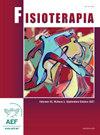Posturas de hombro y codo durante el gesto motor de saque en bandeja según el historial de la lesión musculoesquelética en los padelistas de la ciudad de Talca, Chile
Q4 Health Professions
引用次数: 0
Abstract
Background and objective
Padel has experienced significant growth. It requires repetitive and intense motor gestures (MG), which are associated with musculoskeletal injuries (MSI). The objective was to evaluate shoulder and elbow postures during the tray serve MG in amateur padel players from Talca, Chile.
Methodology
For this observational and cross-sectional study, 30 padel players from Talca, Chile were recruited. They were grouped into those with a history of MSI (wMSI, n = 14, age [95% CI] = 32.9 [29.5-36.4] years) and without a history of MSI (woMSI, n = 16, age [95% CI] = 29.3 [26.7-31.8] years). Angular positions in a sagittal plane of the shoulder and elbow were analyzed for the MG of the serve during a regular game in an official championship. Photogrammetry (Kinovea®) was used for the initial (beginning of the gesture), mid (maximum extension to prepare the stroke), and final (ball impact) postures.
Results
For the shoulder, the initial position is similar in both groups (∼21° flexion), while the mid position is significantly more extended in the woMSI athletes (∼55 vs. ∼45°; P=.002), and this remains in the final phase (∼38 vs. ∼32°). For the elbow, the postures are similar (∼120°). The woMSI athletes achieve greater relative extension at the moment of ball impact (∼141 vs. ∼130°).
Conclusions
The beginning of the MG of the serve shows similar angular postures among all padel players. However, the woMSI athletes exhibit a posture with greater shoulder and elbow extension during the mid and final phases.
根据智利塔尔卡市(Talca)运动员的肌肉骨骼损伤史,在铲球运动中肩膀和肘部的姿势
背景和目标帕德尔经历了显著的增长。它需要重复和强烈的运动手势(MG),这与肌肉骨骼损伤(MSI)有关。目的是评估在托盘服务MG在塔尔卡,智利业余板球员肩部和肘部的姿势。在这项观察性和横断面研究中,从智利塔尔卡招募了30名模型运动员。将患者分为有MSI病史(wMSI, n = 14,年龄[95% CI] = 32.9[29.5-36.4]岁)和无MSI病史(woMSI, n = 16,年龄[95% CI] = 29.3[26.7-31.8]岁)两组。在一场官方锦标赛的常规比赛中,分析了肩部和肘部矢状面的角度位置对发球的影响。摄影测量(Kinovea®)用于初始(手势开始),中期(最大伸展准备击球)和最终(球冲击)姿势。结果:两组肩关节的初始位置相似(弯曲~ 21°),而woMSI运动员的中间位置明显更伸展(弯曲~ 55°vs.弯曲~ 45°;P= 0.002),并且在最后阶段仍然如此(弯曲~ 38°vs.弯曲~ 32°)。对于肘部,姿势相似(~ 120°)。woMSI运动员在球撞击时刻获得更大的相对伸展(~ 141°vs ~ 130°)。结论:所有球拍选手发球开始时的角度姿势相似。然而,woMSI运动员在中期和最后阶段表现出更大的肩部和肘部伸展的姿势。
本文章由计算机程序翻译,如有差异,请以英文原文为准。
求助全文
约1分钟内获得全文
求助全文
来源期刊

Fisioterapia
Health Professions-Physical Therapy, Sports Therapy and Rehabilitation
CiteScore
0.50
自引率
0.00%
发文量
37
期刊介绍:
Publicación Oficial de la Sociedad Española de Fisioterapeutas. Sus páginas ofrecen desde artículos originales hasta revisiones, pasando por el estudio de casos o los actos más importantes relacionados con la especialidad.
 求助内容:
求助内容: 应助结果提醒方式:
应助结果提醒方式:


